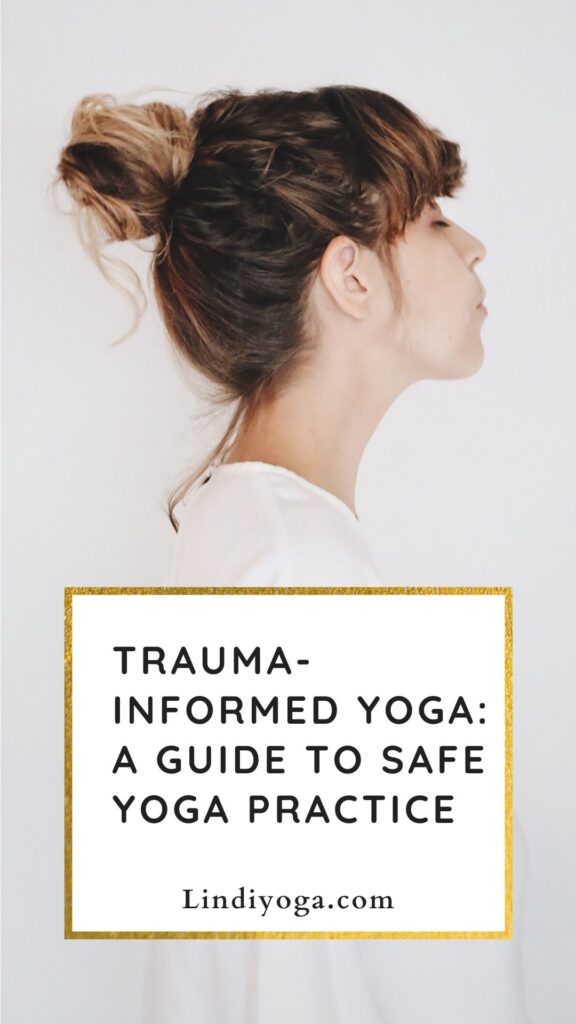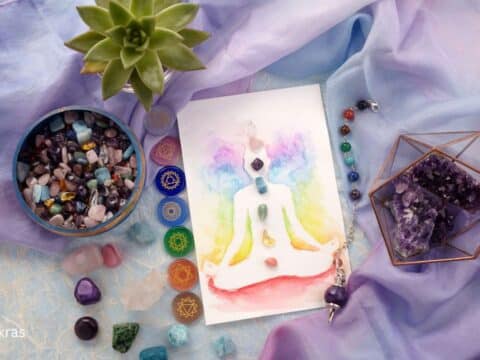Trauma-sensitive yoga is yoga that has been specifically adapted for the needs of trauma victims. This style of yoga is a great way to help survivors of trauma feel more relaxed and calm while focusing on the physical aspect of yoga. Many yoga instructors now incorporate a trauma-sensitive approach into their classes. There are several reasons why this is such a great approach to yoga. For one, it can help to identify the cause of the trauma.
What is trauma yoga?
Trauma can send the brain into overdrive, making it difficult to relax. The benefits of trauma-informed yoga include an ability to focus on the present moment, become more aware of bodily sensations, and become more mindful of the breath. The breath is a major factor in a person’s overall mood, so these practices can help those who have experienced trauma to practice yoga more effectively. In addition to these benefits, trauma-informed yoga also helps people who experience chronic anxiety or depression.
Podcast
Yoga practitioners have shown that trauma-informed yoga can help trauma survivors heal by reconnecting the body and mind. Among those who have benefited from trauma-informed yoga is Marine Sgt. Senio Martz, who recently returned home from Afghanistan where he was the victim of a roadside bomb explosion. During the blast, he was knocked unconscious and many of the Marines under his command were killed.
To find a trauma-informed yoga instructor, start by asking around your community. Ask for references or check online. Make sure that the instructor has received formal training in trauma-informed yoga. The TCTSY Foundation offers a comprehensive directory of certified trauma-informed yoga instructors. You can also consult with mental health professionals for referrals.
Another important feature of trauma-informed yoga is that the instructor will not walk around the class helping people, or even asking if they need help. Touch can be triggering for those who have experienced trauma. Trauma-informed yoga instructors won’t offer hands-on assistance, but will instead ask the participants to ask for help if they need it.
Whats the intention of trauma-informed yoga?
The intention of trauma-informed yoga is not to treat symptoms, but rather to help survivors cope with the trauma caused by the experience. The yoga practice is designed to engage both sympathetic and parasympathetic nervous systems to increase awareness of the physical and emotional states they are experiencing. Moreover, it helps survivors monitor their discomfort so they can monitor their response to the experience.
Using trauma-informed yoga is a great way to make yoga accessible to trauma survivors. It focuses on a student’s internal experience and their own personal healing process, while highlighting the strengths of a survivor and creating an environment where they can connect with their bodies in a safe way. It also encourages them to take control of their own practice.
Although yoga is usually associated with positive effects, it can be problematic for people who have experienced trauma.
Research shows that trauma can have long-term negative effects on physical, mental and emotional health. Many people report having had at least one negative experience in childhood. These experiences are associated with a lack of safety and can have long-term negative effects on physical, mental and emotional health.
If you have experienced trauma, it can affect all areas of your life. However, by using trauma-informed practices, many people can begin to feel safer and heal.
What makes it different from traditional yoga?
It may be that yoga teachers often unwittingly reinforce the very problems they are actually trying to help heal. Many yoga teachers lack the training to treat medical or mental illness, which can unintentionally cause the very problems they are trying to help heal.
The practice is based on the need for a safe and secure environment that is predictable and surrounded by people with similar views.
Trauma-informed yoga is more about the feeling of being anchored in a pose than how the poses are performed. Being present and finding a sense of grounding can help you connect with your mind and body in a way that feels safe.
As you are guided through a supportive experience, you may observe sensations and emotions that arise without feeling triggered or overwhelmed.
When Yoga harms rather than heals
The goal of yoga is to relax the body and mind. This is the opposite of the survival mode that many trauma survivors find themselves in.
Although this can sometimes have positive results, it can also have negative consequences. For example, for people who have survived trauma, their fight-or-flight response may be reactivated by certain yoga techniques, causing their sympathetic nervous system to go into overdrive.
Examples of when yoga can trigger trauma are:
- holding postures for an extended period of time
- physical assistance without permission
- certain breathing exercises (pranayama)
- artificially heated environments that exceed normal body temperature
- when the teacher’s language and sequence of exercises are exclusionary rather than inclusive
- yoga postures that aggressively open the hips and spine
What is trauma-informed yoga teaching?
A key concept of trauma-informed yoga is that students gain a sense of control over their practice and their bodies.
Forcing children to interact before they feel safe can further traumatise them. Trauma-informed teachers also create space for different experiences to promote healing.
Inclusive language that invites choice helps create a safe and supportive environment. Instructions should be invitations rather than commands. Forcing children to interact before they feel safe can further traumatise them.
The principles of trauma yoga
Essentially, Trauma Aware Yoga aims to help students feel grounded, centred and present in their bodies. It is recommended to focus on the following in each pose:
To find the appropriate level of effort for each pose, you can use the following cues.
- If it feels good, do it with more intensity
- If it hurts, don’t do it
Trauma yoga techniques
Trauma conscious yoga is a grounding practice that doesn’t put so much emphasis on the poses themselves.
Yoga poses and breathing exercises that are helpful for anxiety can vary depending on the person.
Conscious breathing is the best way to deal with trauma, whether you are lying or sitting. Its focus is on synchronising movement and breath rather than the full expression of a pose.
Poses that are generally considered safe
Tadasana (mountain pose)
Assume mountain pose by placing the feet hip-width apart. If you feel more comfortable doing this, do not place the feet together. Make sure your feet are firmly on the floor and that you maintain your balance. You should feel a lengthening of the spine and an upward movement of the head. In each pose, pay attention to the feeling of “rooting to rise”.
Sukhasana (easy pose)
Sit cross-legged. If needed, place blocks or rolled blankets under your knees or seat for support. Sit upright and pay attention to your breath. Stay in this position for 5 breaths or as long as feels comfortable.
Go down with your sitting bones and straighten your body from this position. Do not try to force anything. Stay here for five breaths or as long as you feel comfortable. You can breathe consciously or spontaneously – whatever feels best.
If you like, you can cross your arms in front of your chest and use your hands to push your arms up and down from your wrists to your shoulders. This action can create a steady feeling of grounding and mastery. Just pay attention to your breath. Cross the legs again and repeat the exercise.
Balasana (child’s pose)
Begin by sitting on your heels in child’s pose. You can either place your forehead on the mat or use a block or folded blanket for support. Pay attention to what feels better and stay in this position for as long as you like.
Janu Sirsasana (Head-to-knee posture)
As you come into Janu Sirsasana, straighten your spine and bend forward from the hips until you feel a stretch in the back of your leg. Then breathe and remain still as you observe the sensations in your body. You do not need to force the stretch, just lean forward as far as feels comfortable. Repeat the exercise on the other side.
Constructive rest
For this pose, lie on your back on the mat with your knees bent and feet hip-width apart. You can place a block or cushion under your sacrum for support. Place your hands on your body or wherever you feel comfortable. Feel into all parts of your body that touch the mat. Let the floor support you. Stay in this posture for 3-5 breaths or as long as it feels good.
Supta Matsyendrasana (Lying spinal twist)
First lie on your back. Bring your knees to your chest and keep them bent as you lower your legs to the side. Face the direction that is most comfortable for you. Stay in this position for 3-5 breaths or as long as it feels good. Repeat on the other side.
Agni Stambhasana (Fire log or stacked knee-to-ankle)
Begin this pose by placing your knees over your ankles and keeping your shins parallel to the short side of the mat. If there is space between your knees and ankles, you can place blankets or blocks between them for support. As soon as you feel a stretch in your hips, pause. Try to feel your sensations without judging them. Repeat the exercise with the legs alternated.
Tadasana (Mountain posture)
Return to the mountain posture and notice how your body feels. Are there any changes? Stay here for 3-5 breaths or as long as you are comfortable.
Stretch your arms upwards and as far and high as you can comfortably go, inhaling as you do so. Exhale as you bring your arms back towards you.
High lunge
From the High lunge, step back with the right foot and meet the left foot so that you come into a low lunge position. Again, find an intensity that allows you to breathe comfortably. This time rest your hands on the floor on either side of your front foot. Make sure your front knee is directly over your ankle and your back knee is hovering just above the floor. Tense your core and stretch your spine. Stay in this position for 3-5 breaths or as long as it feels good. Repeat on the other side.
Utkatasana (Chair pose)
Squeeze the knees together, bend at the waist and assume the chair pose. Make sure the sides and back of your neck have enough space and do not feel tense. Stay in this position for at least 8 breaths or leave it earlier if it becomes too intense.
What to do if problems arise?
What to do if trauma makes itself felt in your body during a yoga class.
If a student seems to be dissociating or distressed during a yoga class, this may be due to trauma they have experienced. Signs that a student is dissociated or distressed may include responding to cues with the wrong side of the body, breathing quickly or shallowly, or being generally frustrated.
Other signs are:
- a flushed face
- excessive sweating
- uncoordinated movements
If you feel uncomfortable or upset during a yoga class, you can try to stay calm by focusing on your breath, a safe body part or an object in the room. Alternatively, you can leave the room if you feel it is necessary.
Whats the difference between Yoga therapists and Yoga teachers?
A yoga therapist has completed additional training in potential trauma triggers for specific populations compared to the standard 200 and 500 hour certifications. Yoga teachers often continue their training to work with cancer survivors, incarcerated individuals and military personnel.
When looking for a yoga teacher, it is helpful to check his credentials and read his bio. Inquire if he has taken any additional training that may indicate he takes a more therapeutic or adaptive approach, especially if you are looking for someone who works with traumatised people.
Summary
While yoga can offer many benefits, it is important to consider whether a regular class is right for you.
A yoga teacher who is trauma-informed will emphasise your experience in a yoga posture rather than performance. This can support post-traumatic growth and healing for trauma survivors.
The aim of trauma yoga is to practice different postures, breathing exercises or styles of meditation without eliciting negative reactions.
Trauma yoga is an essential aspect of making yoga welcoming, effective and safe for anyone who wishes to practice it. It is not about the style of yoga, but rather how the practice is taught.




